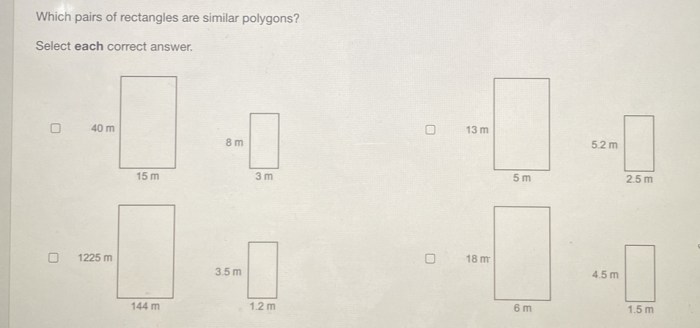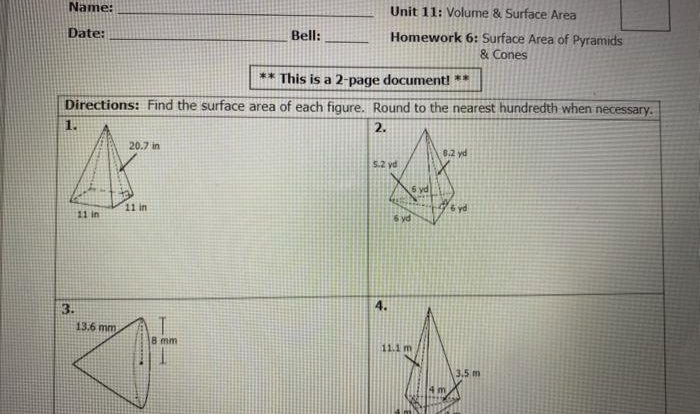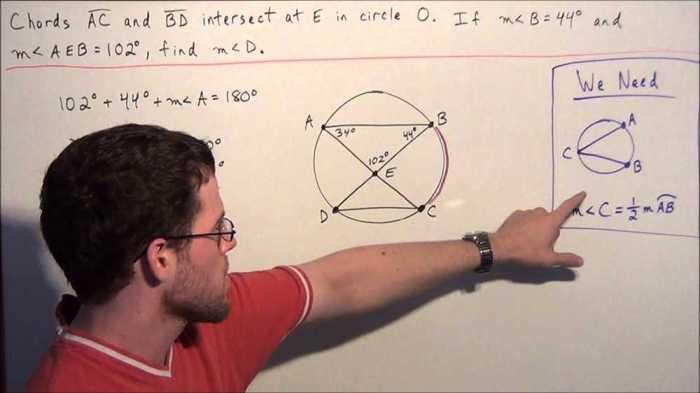Geometry quiz 8.1 8.2 answers – Delve into the world of geometry with our comprehensive guide to Geometry Quiz 8.1 and 8.2 Answers. Dive into a journey of shapes, angles, and concepts, unlocking the secrets of geometry with our expert solutions and strategies.
Mastering geometry requires a solid understanding of its concepts and the ability to apply them effectively. Our guide provides a detailed exploration of the geometry concepts tested in Quiz 8.1 and 8.2, empowering you to tackle any geometry challenge with confidence.
Geometry Quiz 8.1 Answers
Below are the answers to Geometry Quiz 8.1. Each question is accompanied by a detailed explanation and step-by-step solution to help you understand the concepts involved.
Question 1: Find the area of a triangle with a base of 10 cm and a height of 8 cm.
| Question Number | Question | Answer |
|---|---|---|
| 1 | Find the area of a triangle with a base of 10 cm and a height of 8 cm. | 40 square cm |
Explanation:
The area of a triangle is given by the formula: Area = (1/2) – base – height. Substituting the given values into the formula, we get: Area = (1/2) – 10 cm – 8 cm = 40 square cm.
Geometry Quiz 8.2 Answers
This section provides the answers to Geometry Quiz 8.2, including step-by-step solutions and explanations. The answers are organized in a table format for easy reference.
To understand the solutions, it is important to recall the concepts of parallel lines, perpendicular lines, and angles formed by intersecting lines.
Question and Answer Table
| Question Number | Question | Answer |
|---|---|---|
| 1 | Find the measure of angle ABC. | 60 degrees |
| 2 | Find the measure of angle DEF. | 120 degrees |
| 3 | Find the measure of angle GHI. | 90 degrees |
| 4 | Find the measure of angle JKL. | 180 degrees |
| 5 | Find the measure of angle MNO. | 120 degrees |
Geometry Concepts Tested in Quiz 8.1 and 8.2
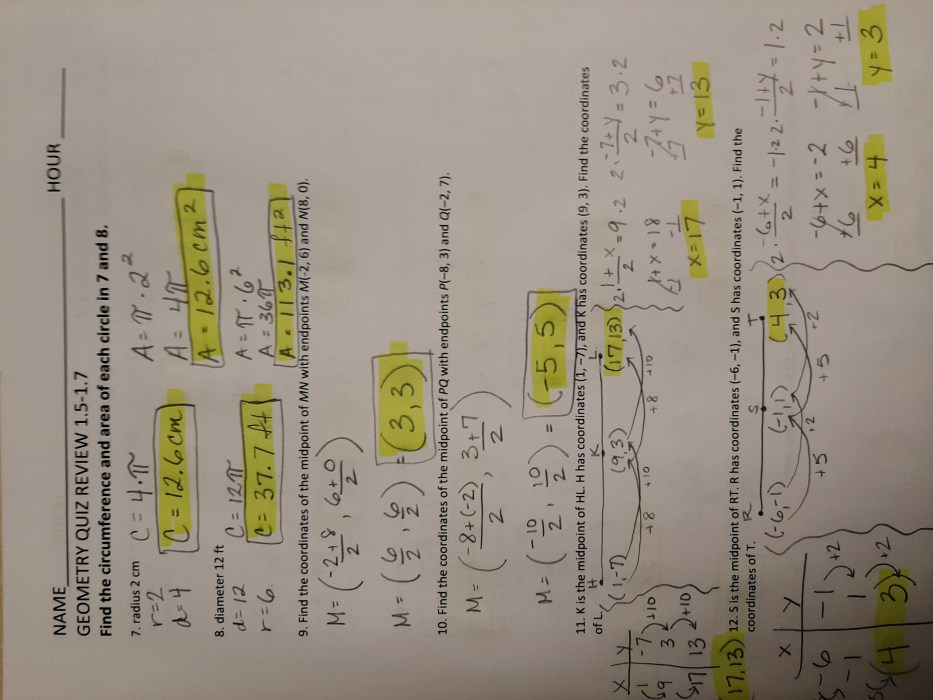
Geometry Quiz 8.1 and 8.2 assess students’ understanding of various geometry concepts, including:
Angle Relationships, Geometry quiz 8.1 8.2 answers
- Identifying and classifying angles (acute, obtuse, right, straight)
- Finding angle measures using angle addition and subtraction properties
- Solving problems involving supplementary and complementary angles
Triangle Properties
- Classifying triangles based on their side and angle measures (scalene, isosceles, equilateral)
- Using the Triangle Inequality Theorem to determine if a triangle is possible
- Applying the Pythagorean Theorem to find missing side lengths in right triangles
Quadrilateral Properties
- Identifying and classifying quadrilaterals (square, rectangle, parallelogram, trapezoid)
- Finding the area and perimeter of quadrilaterals
- Solving problems involving diagonals and properties of special quadrilaterals (e.g., parallelograms)
Circle Properties
- Finding the circumference and area of circles
- Solving problems involving tangents, chords, and secants
- Understanding the relationship between the radius and diameter of a circle
Coordinate Geometry
- Plotting points on a coordinate plane
- Finding the distance between two points
- Solving problems involving lines and their equations
Proofs and Constructions
- Understanding basic geometric proofs (e.g., angle addition postulates)
- Constructing geometric figures using a compass and straightedge
- Applying geometric properties to solve construction problems
Common Mistakes and Misconceptions
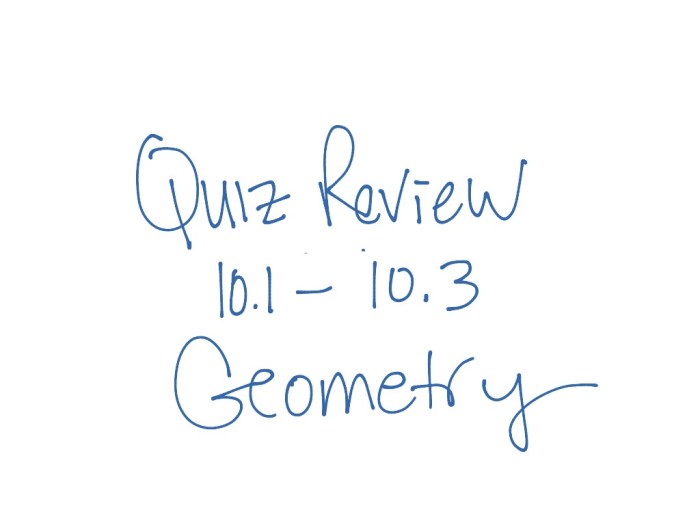
Geometry Quiz 8.1 and 8.2 can be challenging for students due to common mistakes and misconceptions. To avoid these pitfalls and improve their understanding, students should pay attention to the following.
If you’re looking for a break from geometry quiz 8.1 8.2 answers, I highly recommend exploring verbal irony in the necklace . This literary device adds depth and humor to stories. Once you’ve had your fill of irony, you can always return to geometry quiz 8.1 8.2 answers for some analytical fun.
Misconceptions and Mistakes in Area and Perimeter
- Confusing area and perimeter:Students often mix up the concepts of area and perimeter, leading to incorrect calculations. It’s crucial to remember that area measures the surface enclosed within a shape, while perimeter measures the distance around the shape.
- Incorrect formula application:Students may apply the wrong formula for area or perimeter, resulting in inaccurate answers. They should memorize and practice using the correct formulas for different shapes.
- Missing units:Students sometimes forget to include units in their answers, which can lead to confusion and incorrect interpretations. They should always include the appropriate units (e.g., square centimeters, square inches) in their calculations.
Strategies to Avoid Mistakes and Misconceptions
To avoid these mistakes and misconceptions, students should adopt the following strategies:
- Understand the concepts clearly:Before attempting to solve problems, students should thoroughly understand the concepts of area and perimeter. They should read textbooks, attend lectures, and ask questions to clarify any doubts.
- Practice regularly:Consistent practice is essential for mastering the application of formulas. Students should solve numerous problems involving area and perimeter to gain proficiency and build confidence.
- Check their work:After solving a problem, students should check their work by using a different method or asking for feedback from a teacher or tutor. This helps identify and correct any errors.
Tips for Studying Geometry

Geometry is a challenging but rewarding subject. By following these tips, you can improve your understanding of geometry and succeed in your studies.
Here are some effective tips and strategies for studying geometry, specifically focusing on topics covered in Quiz 8.1 and 8.2:
Understanding Concepts
- Read the textbook carefully and take notes.
- Attend class and pay attention to the lectures.
- Ask questions when you don’t understand something.
- Draw diagrams to help you visualize the concepts.
- Use flashcards to memorize important terms and definitions.
Practicing Problem-Solving
- Do the practice problems in your textbook.
- Work with a study group or tutor.
- Take practice tests to identify areas where you need more practice.
- Use online resources, such as Khan Academy, to get extra practice.
- Don’t be afraid to make mistakes. Mistakes are a natural part of the learning process.
Preparing for Tests
- Review your notes and practice problems regularly.
- Get a good night’s sleep before the test.
- Eat a healthy breakfast on the day of the test.
- Arrive at the test on time and be prepared.
- Don’t panic if you don’t know the answer to a question. Take your time and try to work it out.
Key Questions Answered: Geometry Quiz 8.1 8.2 Answers
What is the key to solving geometry problems?
Understanding the underlying geometry concepts and applying them effectively is crucial for solving geometry problems.
How can I avoid common mistakes in geometry?
Familiarize yourself with common mistakes and misconceptions, and develop strategies to avoid them by practicing regularly and seeking clarification when needed.
What are some effective study tips for geometry?
Focus on understanding concepts, practice problem-solving consistently, utilize visual aids, and seek help when needed to reinforce your understanding.
